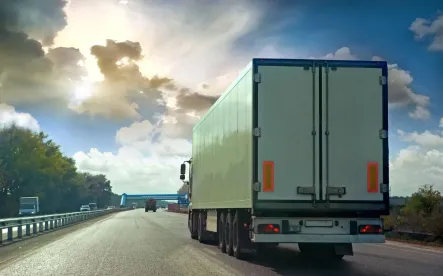On December 20, 2022, the U.S. Environmental Protection Agency (“EPA”) finalized new emission standards for heavy-duty highway vehicles and engines, including heavy-duty trucks and other vocational vehicles such as fire trucks, recreational vehicles, coach buses, and other over-the-road vehicles like cement trucks, beginning with the 2027 model year. These standards were published in the Federal Register on January 24th and will become effective on March 27th. Control of Air Pollution from New Motor Vehicles: Heavy-Duty Engine and Vehicle Standards 86 Fed. Reg. 4296 (January 24, 2023) (hereinafter the “Final Rule”). The Final Rule continues the agency’s aggressive regulation of mobile source emissions. While the Final Rule focuses primarily on nitrogen oxide (“NOx”) emission standards, the agency anticipates that the Final Rule will result in significant reductions in not only NOx but secondary pollutants such as fine particulate matter (“PM2.5”) and ozone.
The Final Rule is the first step in the EPA’s three-part “Clean Trucks Plan” that the agency announced in August 2021. EPA also intends to issue two more proposed rules in the next several months including proposed Phase 3 greenhouse gas emission standards for heavy-duty highway vehicles beginning with the model year 2027 and proposed emission standards for light and medium-duty vehicles beginning with the model year 2027. Overall, EPA’s agenda in this area will all but require that manufacturers implement more hybrid and zero-emission technologies in their fleets to achieve compliance, beginning with the 2027 model year.
Major Components of the Final Rule
The Final Rule incorporates and finalizes much of the proposed rule that EPA issued in the spring of 2022 and which we previously reviewed in detail here, but also makes some departures from the proposal. A number of the significant changes are outlined below.
1. Emission Standards
The standards and testing requirements in the Final Rule mirror those found in “Proposed Option 1” in the proposed rule in many ways; however, rather than a two-step program for emissions standards (with initial standards beginning with the 2027 model year and more stringent standards applying to 2031 and beyond model years), EPA has finalized a single-step program with stringent emission standards beginning with the 2027 model year. EPA reserved the right to issue more stringent standards beyond the 2027 model year but indicated that it is focused on achieving the greatest emissions reduction achievable for the 2027 model year. In addition, EPA has included provisions for interim compliance to address comments on the proposal expressing concern about meeting the more stringent standards over the full useful life of the engine and/or vehicle.
2. Useful Life and Warranty Periods
EPA also finalized significant extensions to the regulatory useful life standards. In most cases, EPA’s useful life standards are 1.5 to 2.5 times longer than existing standards. In the Final Rule, EPA finalized useful life periods based on the intended service class after reviewing data regarding the feasibility of the new standards over the full useful life of the engine/vehicle and considering the average useful life based on the intended service class. EPA also finalized its first significant increase to regulatory emission warranty periods for criteria pollutants since 1983. The previous standards covered between 22 percent and 54 percent of the regulatory useful life of an engine or vehicle based on the primary intended service class. The Final Rule pulls pieces of the warranty proposal from “Proposed Option 1” in the proposed rule and applies them separately based on the intended service class. Overall, the final revised warranty periods are expected to be 2.8 to 4.5 times longer than the current periods depending on the intended service class and the revised warranty periods also cover hybrid systems.
Manufacturer Incentive Programs
The Final Rule also includes several incentive programs for manufacturers for even further reductions in emissions. The Final Rule makes several significant targeted revisions to the Averaging, Banking, and Trading (“ABT”) program for the model year 2027 and later heavy-duty engines and vehicles, and allows four specific pathways to generate NOx emission credits in 2023 through 2026 model years. EPA also finalized optional production volume allowance provisions for model years 2027 through 2029 but revised some aspects of the proposal related to using emission credits for certification and credits from zero-emission vehicles. The most significant departure from the proposal related to incentive programs is that EPA has decided not to finalize the provisions allowing manufacturers to generate NOx emission credits from heavy-duty zero-emission vehicles. EPA explained that the Final Rule is already technology-forcing, there will be increased zero-emission vehicle use in fleets by the model year 2027, and so allowing NOx emission credits for zero-emission vehicles would result in fewer emission reductions. That said, zero-emission or low-emission vehicles will nevertheless likely be necessary to meet the more stringent emission standards more generally. The Final Rule also does not include the proposed Early Adoption Incentives program, and the final program does not include emissions credit multipliers. All of these changes remove options to incent manufacturers to phase in new engines before 2027 to allow them to phase down other engines after the 2027 model year.
The Final Rule also addresses some additional changes and considerations for advancing technologies, provisions related to tampering, durability testing, and maintenance, as well as numerous other technical revisions and updates. As anticipated, the Final Rule, will cause changes throughout the supply chain and further encourage continued moves toward electrification in the heavy-duty industry. The more stringent standards may also cause delays in the supply chain and engine availability affecting engine inventories and new product development for vehicle manufacturers. While there are limited hardship exemptions for vehicle and engine manufacturers related to the implementation of new emission standards, those hardship exemptions include very detailed criteria and it is extremely difficult to take advantage of those provisions. For this reason, engine and vehicle manufacturers must be planning and preparing for the implementation of these new standards for the model year 2027 now.
EPA has indicated that the Final Rule will further incentivize continued advances in emission control and zero-emission technologies and promote a zero-emission future. The Final Rule comes one year to the day after EPA finalized similar rules for greenhouse gas emissions for passenger cars and light trucks beginning with the 2023 model year, and makes clear that the agency is reducing vehicle emissions a continued priority.





 />i
/>i

